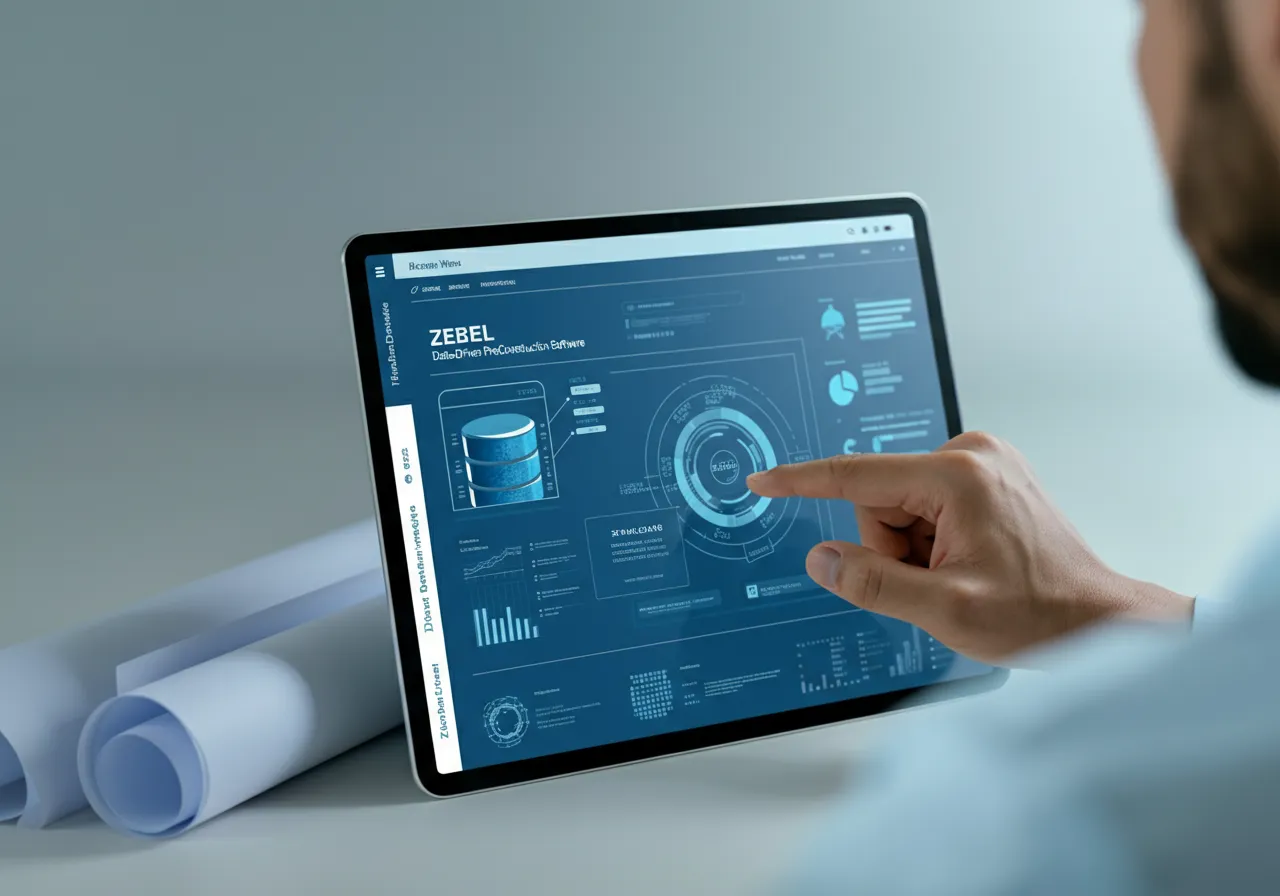Construction projects are known for their complexity, and even the best-planned ventures can experience cost overruns. These overruns aren’t just financial nuisances; they can jeopardize project timelines, affect stakeholder relationships, and impact the overall financial health of an organization.
But here’s the good news: with proactive planning, accurate forecasting, and effective management, construction cost overruns can be mitigated. This guide dives into the common causes and offers actionable strategies to keep your construction projects on track and within budget.
What are Construction Overruns?
Cost overruns occur when the actual cost of a construction project exceeds the estimated or planned cost. This can happen for a variety of reasons, including unforeseen issues, changes in scope, and inaccurate forecasting.
In essence, cost overruns are deviations from the initial budget set for a project. They can occur at any stage of a construction project – from pre-construction planning to post-construction analysis – and can have significant impacts on the success of the project.
The Consequences of Cost Overruns
Cost overruns can create a cascade of challenges for construction companies, affecting their financial stability, reputation, and operational efficiency.
Financial Impact
From a financial perspective, exceeding the budget can lead to diminished profit margins or even significant losses, especially in cases where contracts are fixed-price and the company must bear the additional costs. This financial strain can reduce the company’s ability to invest in future projects, hire skilled staff, or maintain equipment, thus hindering long-term growth.
Brand Reputation and Image
Beyond immediate financial impacts, cost overruns can tarnish a construction company’s reputation. Clients rely on project accuracy and reliability, and frequent overruns can erode trust and damage client relationships. A poor reputation in the industry may limit opportunities to secure new contracts, as potential clients may seek more dependable competitors.
Timelines and Resources
Operationally, cost overruns can disrupt project timelines and resource allocation. Additional funding may need to be secured, delaying project completion and tying up resources that could be used on other initiatives.
Additionally, addressing the root causes of overruns, such as design changes or unforeseen site conditions, often diverts management attention and increases administrative workloads, reducing overall efficiency.
The consequences of cost overruns extend far beyond the immediate project, influencing financial health, market competitiveness, and organizational sustainability.
Understanding the Main Causes of Construction Cost Overruns
Identifying the root causes of construction cost overruns is the first step toward mitigation. Here are some of the most common causes:
1. Poor Project Planning and Scope Management
A major cause of cost overruns is inadequate project planning and poor management of the project scope. This can include inaccurate cost estimation, unrealistic schedules, and incomplete project scopes during the preconstruction phase.
To avoid this issue, it is critical to have a detailed and thorough understanding of the project requirements before starting any construction work. This includes creating a realistic budget and timeline, as well as clearly defining the scope of the project.
2. Inaccurate Cost Estimates
Unreliable estimates or calculations that fail to account for fluctuations in material and labor costs can set projects on the wrong financial trajectory from the outset. This can lead to unexpected delays and additional costs, causing frustration for all parties involved.
To ensure accurate cost estimates, it is essential to conduct thorough research into current market prices for materials and labor. It is also important to consider any potential risks or unforeseen circumstances that may impact the project’s budget. Utilizing advanced preconstruction estimating software can also help in creating more accurate cost projections.
3. Change Orders and Scope Creep
Frequent change orders or evolving project scopes can cause significant delays and cost increases, especially when not properly managed. A change order is a written agreement between the client and contractor that outlines any changes to the original project scope, budget, or timeline. These changes may be due to various reasons, such as unforeseen site conditions, design modifications, or additional client requests.
To prevent extensive change orders and scope creep, it is important to have clear communication with the client from the start of the project. This includes clearly defining project objectives, timelines, and budgets during contract negotiations. It is also crucial to thoroughly review and document any requested changes and their potential impact on the project.
Having a structured change management process can help avoid client misunderstandings and client disputes.
4. Supply Chain Disruptions and Material Cost Fluctuations
Unpredictable material costs and supply chain bottlenecks can inflate the overall budget. For example, a sudden increase in demand for specific materials can lead to price hikes.
Additionally, natural disasters, transportation disruptions, and political instability in suppliers’ regions can cause delays in material deliveries.
To mitigate these risks, project managers should have a clear understanding of the supply chain and identify potential vulnerabilities. Conducting market research and establishing alternative suppliers can also help minimize the impact of material cost fluctuations and supply chain disruptions.
Moreover, contingency plans can help mitigate the impact on the budget and timeline if unexpected events occur. This could include setting aside reserves for potential price increases or implementing agile project management strategies to adapt to changing circumstances quickly.
5. Labor Shortages and Inefficiencies
Construction is heavily dependent on skilled labor, and labor shortages or inefficient workforce management can lead to lost productivity and higher costs. To address this challenge, technology is playing an increasing role in the construction industry. Companies are investing in tools such as drones, 3D printing, and virtual reality to streamline processes and improve efficiency.
In addition to technological advancements, companies are also implementing strategies to attract and retain skilled workers. This includes offering competitive salaries and benefits packages, providing training and development opportunities, and creating a positive work culture.
6. Poor Communication Among Stakeholders
Miscommunication between project teams, subcontractors, and clients can result in delays, rework, and unnecessary expenses. To combat this issue, companies are utilizing project management software and implementing standardized communication protocols. These tools help to foster collaboration, improve transparency, and ensure all stakeholders are on the same page.
Other strategies for improving communication include regular check-ins and status updates, creating open lines of communication among team members, and addressing any conflicts or issues promptly.
With effective communication practices in place, projects can run more smoothly and efficiently, resulting in better overall outcomes for everyone involved.
7. Poor Contractor Selection and Management
Hiring contractors based solely on the lowest bid or lacking a vetting process can lead to inefficiencies, poor quality, and even rework that drives up costs. It’s important to research and interview potential contractors, check references, and evaluate their work history.
Additionally, clearly outlining project expectations, deadlines, and deliverables in a contract can help prevent misunderstandings and ensure accountability.
Once contracted, effective management of contractors is essential for project success. Establishing clear lines of communication, setting regular check-ins and progress updates, and providing timely feedback are all key components of successful contractor management.
By actively managing contractors throughout the project lifecycle, issues can be addressed early on before they impact the overall success of the project.
8. Unexpected Site Conditions
Surprises like soil instability, unexpected underground utilities, or environmental issues can necessitate costly changes to the initial project plan. It is important to have a contingency plan in place for unexpected site conditions and to communicate this plan to contractors. Additionally, it may be necessary to adjust the project timeline or budget to accommodate these unexpected challenges.
To mitigate the risk of encountering unexpected site conditions, it is crucial to conduct thorough site surveys and investigations prior to initiating any construction work. This can help identify potential issues that may arise and allow for proper planning and budgeting. Working closely with experienced contractors who have knowledge of local building codes and regulations can also help reduce the likelihood of encountering unexpected site conditions.
9. Regulation Changes
It’s important to stay updated on any changes in regulations that may impact your project. It is common for local building codes and regulations to be revised or amended, especially in response to safety concerns or emerging technologies.
To ensure compliance with these regulations, work closely with certified professionals who have an understanding of the latest requirements and can help you navigate any necessary updates to your project plans.
How to Deal with Project Cost Overruns
To avoid a project cost overrun, businesses must take a proactive, solutions-oriented approach. Below are proven strategies to minimize risks and take control of your construction projects.
1. Planning and Scope Management
- Define a Clear Scope: Collaborate with stakeholders to outline the exact objectives of the project, ensuring everyone is aligned. Avoid vague or undefined deliverables.
- Utilize Work Breakdown Structure (WBS): Break the project into smaller, manageable tasks for better clarity and accountability.
- Create Realistic Timelines: Avoid overpromising and build buffer time into your schedule for unforeseen delays.
2. Cost Estimation and Budgeting
- Thorough Cost Estimation: Use industry-standard estimation tools and data from previous projects to create precise estimates.
- Contingency Planning: Allocate contingency funds (typically 5-15% of the project budget) to account for unexpected expenses.
- Regularly Update Cost Data: Adjust estimates as the project progresses to reflect current material and labor costs.
3. Effective Change Order Management
- Establish a Workflow: Develop a formal process for evaluating and approving all change orders.
- Document Everything: Ensure all changes are documented and include cost impacts so stakeholders fully understand the implications.
- Communicate Delays: Update team members and clients promptly about the effects of change orders on timelines and budgets.
4. Proactive Supply Chain Management
- Diversify Suppliers: Avoid reliance on a single source to mitigate risks of disruption.
- Monitor Market Trends: Stay informed on material prices to anticipate and mitigate potential cost surges.
- Cultivate Relationships: Maintain strong partnerships with suppliers to negotiate better deals and delivery terms.
5. Labor and Resource Management
- Optimize Scheduling: Use tools to allocate workforce efficiently, ensuring no task is over- or understaffed.
- Invest in Training: Regular workforce training enhances productivity and reduces inefficiencies.
- Implement Technology: Adopt productivity-enhancing technologies like advanced scheduling tools or automated equipment monitoring.
6. Communication and Collaboration
- Hold Regular Meetings: Conduct weekly check-ins with stakeholders to ensure alignment on project progress and any issues.
- Foster Transparency: Keep all project documents, updates, and communications centralized and accessible to reduce miscommunication.
7. Risk Management
- Identify Potential Risks: Use site surveys, historical project data, and forecasting tools to anticipate risks.
- Prepare Contingency Strategies: Create detailed action plans for common challenges like weather events or material shortages.
- Enforce Safety Standards: Minimize on-site accidents and delays by implementing clear safety protocols, especially in high-risk zones.
Preventing Construction Budget Overruns with Technology
The construction industry is significantly benefiting from advancements in technology for more effective cost management. Here’s how tech is helping to mitigate overruns:
Project Management Software
Modern project management platforms allow for efficient real-time tracking of budgets and schedules. Features like automated reporting and alerts for potential overruns provide immediate insights, enabling corrective actions.
Estimating Software
Inaccurate cost estimation is one of the primary reasons for project overruns. With digital estimating software, contractors can produce more precise estimates using historical data from previous projects and current market pricing. This reduces the risk of underestimating costs.
Building Information Modeling (BIM)
BIM tools enable project teams to create detailed, digital representations of construction projects. This visual modeling reduces planning errors, highlights potential areas of scope creep, and minimizes rework.
Data Analytics
By analyzing historical data, construction companies can forecast potential risks, inefficiencies, or areas of cost escalation. Analytics can also guide smarter decision-making and resource allocation to reduce disruptions and waste.
Achieving Project Excellence Through Cost Control
The risks associated with construction cost overruns are significant but manageable. By addressing underlying causes like poor planning, miscommunication, and resource inefficiencies, stakeholders can accurately align project scope and budgets.
Adopting these strategies means fewer distractions, reduced delays, and improved financial health for your construction business.
Don’t let budget overruns derail your projects. With Zebel’s data-driven estimating tools, you can forecast accurately, manage resources effectively, and stay ahead of costly surprises.
Start building smarter.
Book your free demo today and see how Zebel empowers you to deliver on time and on budget—with confidence.
Frequently Asked Questions
How often do construction projects go over budget?
Industry data shows that 28% of construction projects exceed their initial budgets, highlighting the critical need for accurate estimating and robust preconstruction planning. Using advanced estimating tools like Zebel can help mitigate these risks and enhance budget reliability.
What is a reasonable cost overrun?
A reasonable cost overrun typically falls within 5-10% of the original project budget, depending on the project’s scope and complexity. Implementing effective planning and resource management strategies can help minimize these deviations.
What is the formula for cost overrun?
The formula for cost overrun is calculated as:
Cost Overrun = (Actual Cost – Budgeted Cost) / Budgeted Cost × 100%.
This provides the percentage by which the actual costs exceed the planned budget.







